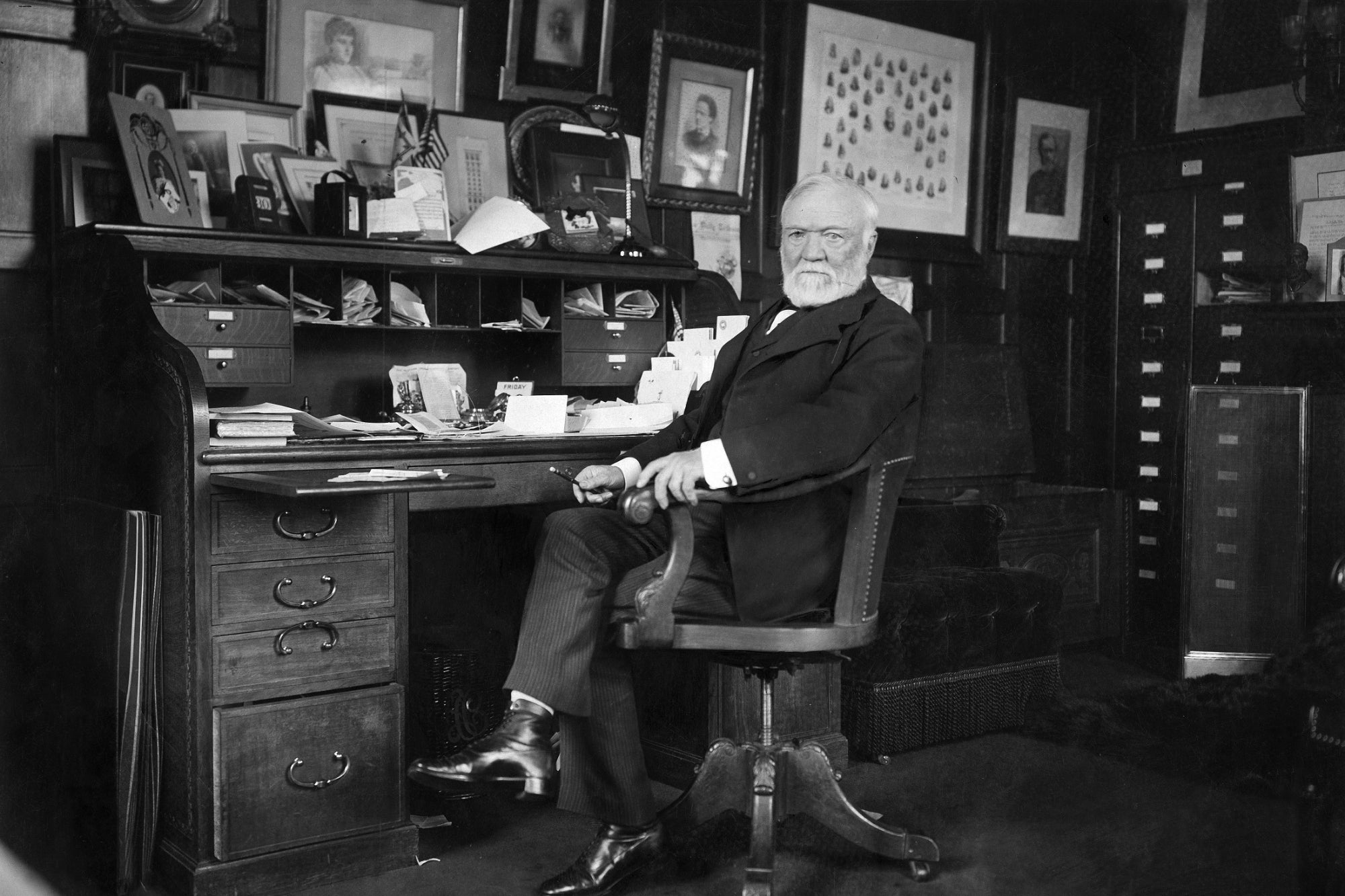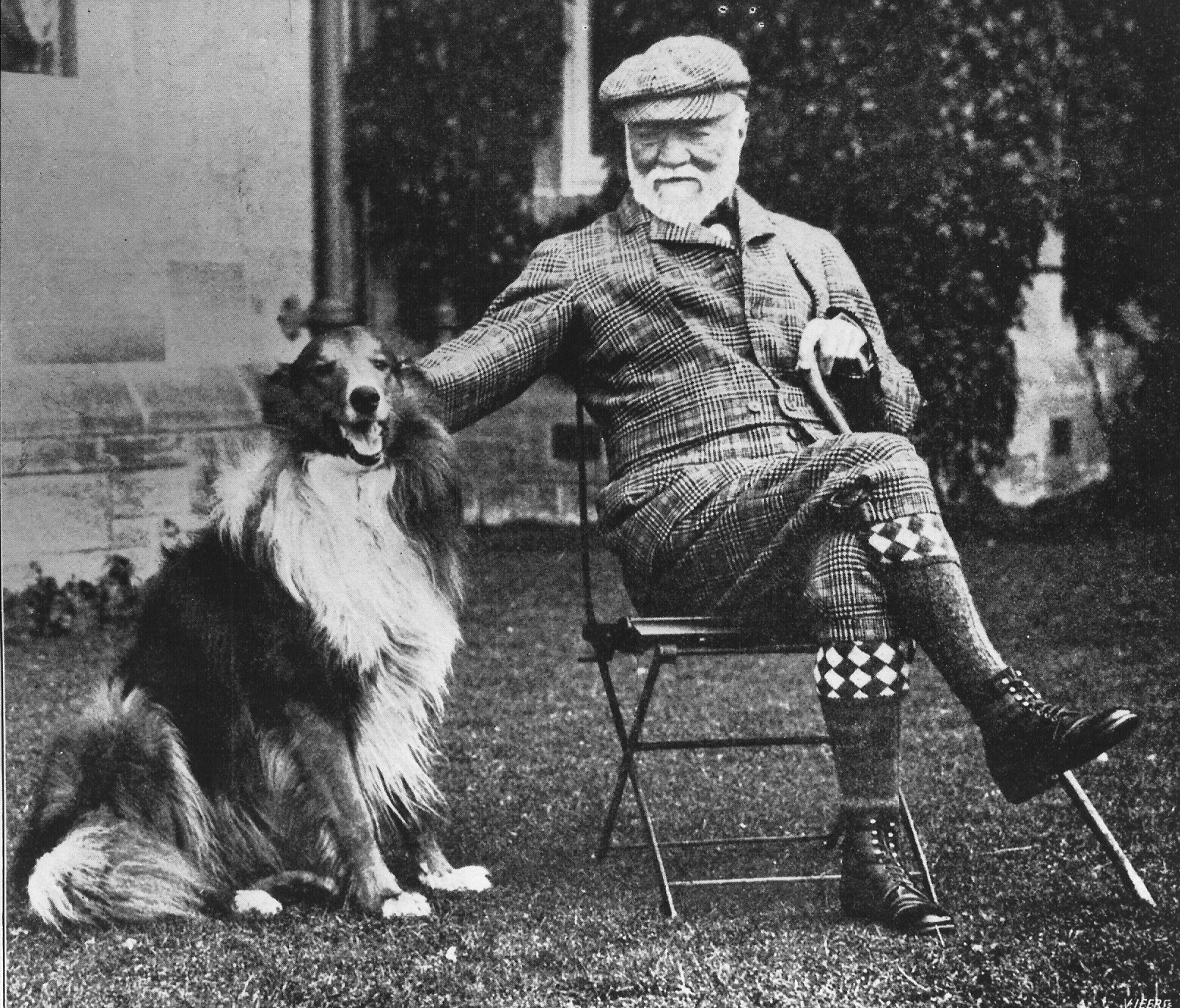Ever wonder how one guy went from being dirt poor to becoming the richest man alive? Andrew Carnegie's journey is like a real-life rags-to-riches story that'll blow your mind. This ain't just about money; it's about grit, smarts, and knowing how to play the game. So buckle up, 'cause we're diving deep into how Andrew Carnegie made his fortune, and trust me, it's a story worth telling.
Now, let's be real here—Carnegie didn't just stumble into wealth by accident. He worked his butt off, took calculated risks, and had a knack for spotting opportunities when others didn't even see 'em. His rise wasn't just about being in the right place at the right time; it was about making the most out of every situation, no matter how tough it got.
Before we dive into the nitty-gritty, let me give you a heads-up: this ain't your average history lesson. We're gonna break down how Carnegie built his empire step by step, with some juicy details you might not have heard before. So, let's get started, shall we?
- Marlene Beniacutetez The Rising Star Whos Taking The World By Storm
- Meet Miss Cleorsquos Children The Untold Story Behind The Crystal Ball Empire
Biography of Andrew Carnegie: A Quick Overview
Who Was Andrew Carnegie?
Andrew Carnegie wasn't born with a silver spoon in his mouth. Nope, this dude started from the bottom—and I mean the very bottom. Born in Dunfermline, Scotland, in 1835, Carnegie immigrated to the United States with his family when he was just 13 years old. They were dirt poor, but young Andrew had big dreams.
Check out this quick bio to get the lowdown:
| Full Name | Andrew Carnegie |
|---|---|
| Birth Date | November 25, 1835 |
| Place of Birth | Dunfermline, Scotland |
| Death Date | August 11, 1919 |
| Net Worth (at peak) | Approximately $310 billion in today's dollars |
So yeah, Carnegie didn't start rich, but he sure ended up that way. And how he did it? Well, that's what we're about to uncover.
- Gary Allen Russell The Rising Star You Need To Know
- Barry Watson From 7th Heaven The Journey Of A Talented Actor
How Did Andrew Carnegie Make His Fortune?
Step 1: Starting Small
Let's rewind to the beginning. Carnegie's first job in the U.S.? A telegraph messenger boy. Yeah, you heard me right. He was running errands and delivering messages for a measly $2.50 a week. But here's the kicker—he wasn't just running around aimlessly. Carnegie soaked up everything he could about the telegraph system, learning the ins and outs of communication tech. That knowledge would come in handy later when he transitioned into railroads.
See, Carnegie had a knack for spotting trends. He realized that railroads were the future of transportation, and he wanted in. So, he started investing his meager savings into railroad stocks. And guess what? It paid off big time.
Step 2: Building Bridges
Fast forward a bit, and Carnegie's got himself a job as a superintendent for the Pennsylvania Railroad. While he was there, he did something pretty smart—he started building bridges. Literally. Carnegie saw an opportunity to construct iron bridges for the railroads, replacing the old wooden ones. And you know what? He was right. Iron bridges were stronger, safer, and more durable. It was a game-changer.
But Carnegie wasn't satisfied with just building bridges. He wanted to control the entire process, from raw materials to finished products. That's where his next move came in.
The Steel Industry: Carnegie's Big Break
Step 3: Entering the Steel Game
Here's where things get really interesting. Carnegie realized that steel was the future. It was stronger than iron, more versatile, and perfect for building skyscrapers, bridges, and railroads. So, he decided to dive headfirst into the steel industry.
He started the Carnegie Steel Company, and it was no ordinary business. Carnegie wanted to control every aspect of steel production. He bought up iron ore mines, coal mines, and even shipping fleets. This vertical integration strategy allowed him to cut costs and increase profits. It was genius.
By the late 1800s, Carnegie Steel was the largest and most profitable steel company in the world. And Carnegie? Well, he was raking in the dough.
Step 4: Innovating the Process
But Carnegie didn't stop there. He was always looking for ways to improve efficiency. One of his biggest innovations was adopting the Bessemer process, a new method of producing steel that was faster and cheaper than traditional methods. This gave Carnegie a huge advantage over his competitors.
And let's not forget about his workforce. Carnegie believed in paying his workers well—at least, compared to other companies at the time. He also invested in training and education programs for his employees, which helped boost productivity and morale.
Key Factors Behind Carnegie's Success
Factor 1: Visionary Leadership
Andrew Carnegie wasn't just a businessman; he was a visionary. He had a clear vision of where the world was heading, and he positioned himself accordingly. Whether it was investing in railroads, building bridges, or entering the steel industry, Carnegie always had his eye on the future.
His ability to anticipate trends and adapt to changing circumstances was a key factor in his success. He wasn't afraid to take risks, but he always made sure those risks were calculated.
Factor 2: Strategic Partnerships
Another reason Carnegie succeeded was his knack for forming strategic partnerships. He surrounded himself with smart, capable people who shared his vision. These partnerships helped him navigate the complex world of business and stay ahead of the competition.
For example, Carnegie partnered with Henry Clay Frick, a coal magnate who supplied Carnegie's steel mills with high-quality coke. This partnership was instrumental in Carnegie's success, as it ensured a steady supply of raw materials at a competitive price.
Challenges Along the Way
Challenge 1: Labor Strikes
Of course, Carnegie's journey wasn't all sunshine and rainbows. He faced his fair share of challenges, especially when it came to labor relations. One of the most infamous incidents was the Homestead Strike of 1892, where workers at Carnegie's steel plant went on strike over wage cuts.
The strike turned violent, and Carnegie's reputation took a hit. Critics accused him of being ruthless and uncaring toward his workers. But Carnegie maintained that he was simply trying to keep his business competitive in a tough market.
Challenge 2: Economic Downturns
Carnegie also had to navigate several economic downturns during his career. The Panic of 1873 and the Panic of 1893 were particularly tough, as they caused widespread unemployment and financial instability. But Carnegie weathered these storms by focusing on efficiency and cutting costs where necessary.
His ability to adapt and survive during tough times was a testament to his resilience and determination.
Carnegie's Legacy: Beyond the Steel Empire
Philanthropy: Giving It All Away
One of the most remarkable things about Andrew Carnegie is that he gave away almost all of his fortune. He believed in the philosophy of "the man who dies rich dies disgraced," and he put that belief into action.
By the time he died in 1919, Carnegie had donated over $350 million (in today's dollars) to various causes, including education, libraries, and scientific research. His legacy lives on through institutions like Carnegie Mellon University and the Carnegie Corporation of New York.
Lessons from Carnegie's Life
So, what can we learn from Andrew Carnegie's life? A few key takeaways:
- Hard work pays off, but so does smart thinking.
- Anticipate trends and adapt to changing circumstances.
- Invest in your people and give them the tools they need to succeed.
- Give back to the community and leave a lasting legacy.
Conclusion: What Can We Learn from Carnegie's Journey?
Andrew Carnegie's story is a testament to the power of determination, innovation, and strategic thinking. He started from nothing and built one of the largest and most successful businesses in history. And when he had it all, he gave it away, leaving a legacy that continues to inspire people to this day.
So, what's the moral of the story? Whether you're an entrepreneur, a business leader, or just someone looking to make a difference in the world, there's a lot we can learn from Andrew Carnegie's journey. So, take a page out of his book and start building your own empire—just don't forget to give back when you get there.
Now, it's your turn. What do you think about Andrew Carnegie's story? Let me know in the comments below, and don't forget to share this article with your friends. Who knows? Maybe one day you'll be telling your own rags-to-riches story.
Table of Contents
- Biography of Andrew Carnegie
- How Did Andrew Carnegie Make His Fortune?
- Step 1: Starting Small
- Step 2: Building Bridges
- The Steel Industry: Carnegie's Big Break
- Step 3: Entering the Steel Game
- Step 4: Innovating the Process
- Key Factors Behind Carnegie's Success
- Factor 1: Visionary Leadership
- Factor 2: Strategic Partnerships
- Challenges Along the Way
- Challenge 1: Labor Strikes
- Challenge 2: Economic Downturns
- Carnegie's Legacy: Beyond the Steel Empire
- Philanthropy: Giving It All Away
- Lessons from Carnegie's Life
- Conclusion: What Can We Learn from Carnegie's Journey?
- Actor Flip Wilson The Legendary Comedian Who Redefined Standup
- Leonardo Dicaprio Movies A Journey Through The Iconic Films Of A Legend


